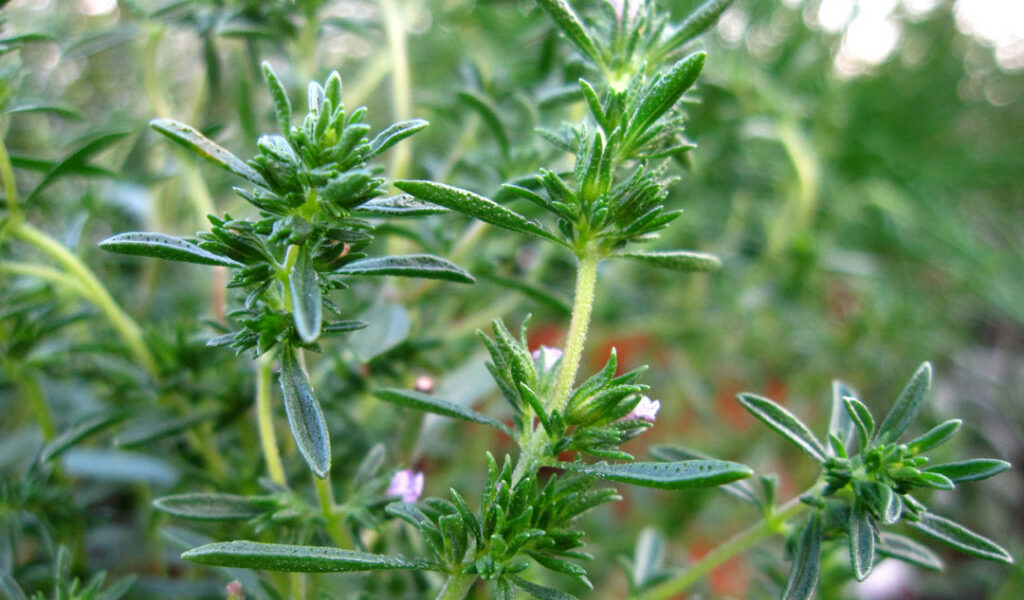Summer savory (Satureja hortensis, native to Southeastern Europe) has been growing on my New York City terrace for four years. The annual cousin to hardy winter savory (Satureja montana), I find it more flexible in culinary applications as its flavor develops during the growing season. While it remains relatively unknown on American shores, I can’t imagine my summer cooking without its thyme-y pungence.
After buying my first, hard-to-find seedling, I never spent another penny, as it self-seeds (maybe too) freely, popping up in spring all over my container garden.
The savory growing calendar looks like this:
May: The tiny volunteer seedlings are identified, the strongest selected and the rest weeded out ruthlessly.
June: The leaves are fragile and soft, and I push tender tips into the cavity of a roast chicken. They make a flavor-popping herb sauce for grilled portobello mushrooms: I chop a whole cup of fresh savory leaves—you can use the tender stalks, too; add a cup of chopped flatleaf parsley and a crushed clove of garlic, and cook both very gently in about four tablespoons of butter. After five minutes, add a squeeze of lemon juice, cook another minute or so for it to caramelize a little, and pour over grilled mushrooms just before eating. I also use it as a substitute for parsley in gremolata to serve with oily fish like mackerel or bluefish.
July: Plants reach maturity and start losing their flavor-concentrated heads to the kitchen on a regular basis. The midsummer leaves paired with olive oil and an anchovy or two are dribbled over a good steak, or over toasted, salted pieces of sourdough bread as an unconventional snack with drinks. Otherwise use summer savory for a green herb rub, chopped up with some lemon zest and garlic for pork ribs, or underneath the skin of a spatchcocked chicken grilled on the coals.
August: Pretty little white flowers appear. Bees love them. I begin to pick extravagant bunches for mixing into lamb meatballs with pomegranate molasses and for marinating barbecue-bound butterflied legs of lamb with summer savory and yogurt.
September: I cut the plants down, freeing those containers for the sowing of fall salad greens. After a couple of hours in a 200-degree oven, the leaves and seeds will keep in a mason jar through the winter. I’m not much into dried herbs, but I fell in love with the intense, unrestrained flavor of dried summer savory. During the cool and the freezing months the dried herb is added in luxurious pinches to paprikash, or to a bowl of salt and ground paprika as a table condiment, a practice common in Bulgaria.
Summer savory needs full sun to grow well (six hours or more), a daily drink of water and well-drained soil. Look for seeds in nurseries, at Greenmarkets or online.





